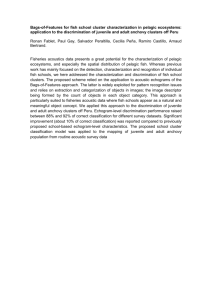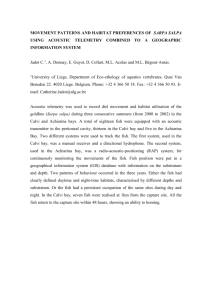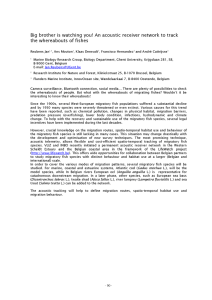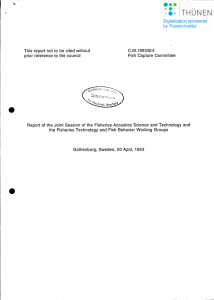1st NSERC HydroNet Symposium, Winnipeg Delta April 29thand 30
advertisement
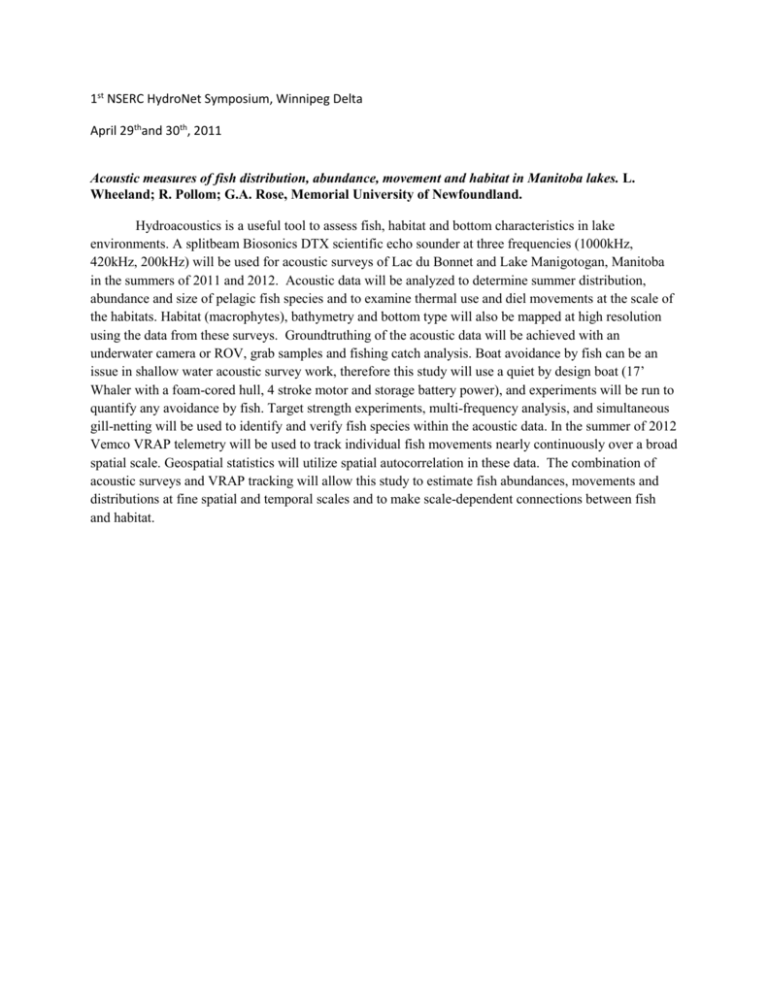
1st NSERC HydroNet Symposium, Winnipeg Delta April 29thand 30th, 2011 Acoustic measures of fish distribution, abundance, movement and habitat in Manitoba lakes. L. Wheeland; R. Pollom; G.A. Rose, Memorial University of Newfoundland. Hydroacoustics is a useful tool to assess fish, habitat and bottom characteristics in lake environments. A splitbeam Biosonics DTX scientific echo sounder at three frequencies (1000kHz, 420kHz, 200kHz) will be used for acoustic surveys of Lac du Bonnet and Lake Manigotogan, Manitoba in the summers of 2011 and 2012. Acoustic data will be analyzed to determine summer distribution, abundance and size of pelagic fish species and to examine thermal use and diel movements at the scale of the habitats. Habitat (macrophytes), bathymetry and bottom type will also be mapped at high resolution using the data from these surveys. Groundtruthing of the acoustic data will be achieved with an underwater camera or ROV, grab samples and fishing catch analysis. Boat avoidance by fish can be an issue in shallow water acoustic survey work, therefore this study will use a quiet by design boat (17’ Whaler with a foam-cored hull, 4 stroke motor and storage battery power), and experiments will be run to quantify any avoidance by fish. Target strength experiments, multi-frequency analysis, and simultaneous gill-netting will be used to identify and verify fish species within the acoustic data. In the summer of 2012 Vemco VRAP telemetry will be used to track individual fish movements nearly continuously over a broad spatial scale. Geospatial statistics will utilize spatial autocorrelation in these data. The combination of acoustic surveys and VRAP tracking will allow this study to estimate fish abundances, movements and distributions at fine spatial and temporal scales and to make scale-dependent connections between fish and habitat.


